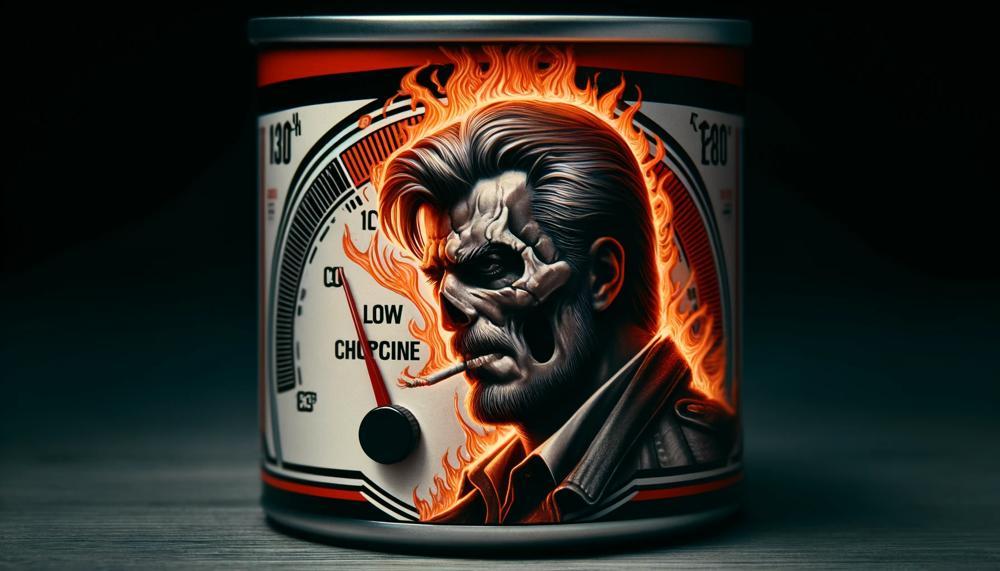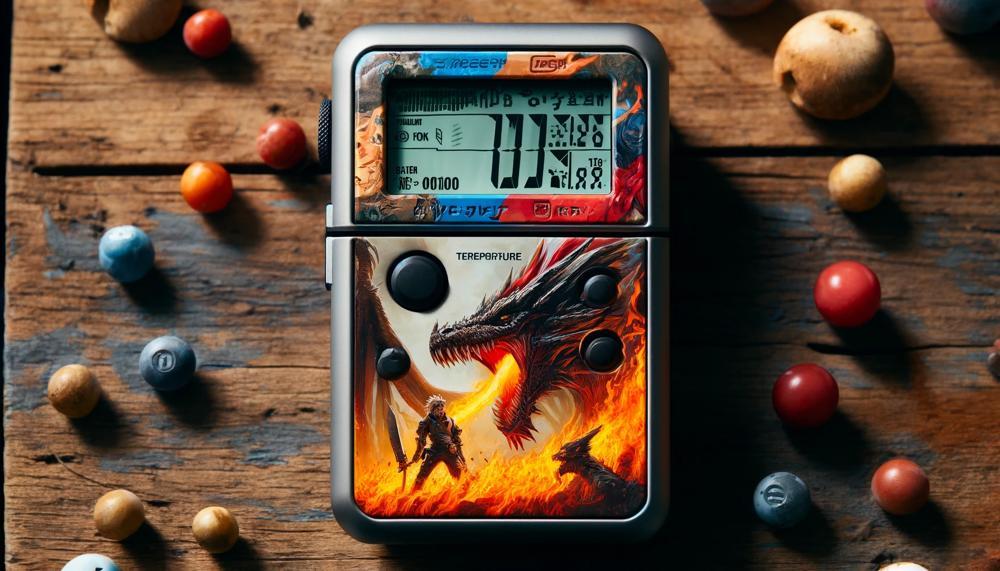Have you ever been eagerly waiting for your Traeger grill to reach the perfect temperature, only to find that it’s struggling to heat up? It can be frustrating and disappointing, especially when it leads to overcooked or underdone food. But don’t worry, you’re not alone in this struggle.
We understand the struggle of dealing with low temperatures on a Traeger grill, which is why we’ve compiled some helpful tips and tricks to fix this issue. In this blog post, we’ll cover everything from the common causes of low temperatures on a Traeger to simple solutions that will have your grill heating up like a pro. So, how do you fix a low temperature on a traeger?
Here are some steps you can take to fix a low temperature issue on a Traeger grill:
- Use Traeger pellets and store them in a dry place.
- Clean the firepot and the RTD temperature probe regularly.
- Check the firepot for rust and corrosion and replace it if needed.
- Upgrade the temperature controller to a newer model with advanced grilling logic.
- Avoid opening the lid too often and monitor the internal temperature on the digital thermostat.
- Ensure your grill’s lid is closed when starting and preheating.
- Check your grill’s firmware and update if needed.
- Check the quality of your pellets. Wet, old, or low-quality pellets can cause temperature issues.
- If the issue persists, you may need to replace the RTD temperature probe.

Let’s get started.
Contents
Understanding How Traeger Grills Work
The innovative technology incorporated into Traeger grills is the key to their ability to maintain a precise temperature throughout the entire cooking process.
This is made possible by the combination of a digital thermostat, auger system, circulation fan, and the use of wood pellets as a fuel source.
Digital Thermostat:
- Traeger grills are equipped with a digital thermostat that enables precise temperature control with small increments of just 5 degrees Fahrenheit.
- This means that once the desired temperature is set, the grill will consistently maintain it without any fluctuations.
- The need for constant monitoring and adjustments is eliminated, making the cooking experience more convenient and enjoyable.
Auger System:
- To maintain a consistent temperature, the auger system feeds wood pellets from the hopper into the firepot where they are ignited to provide the necessary heat source for cooking.
- The digital thermostat controls the speed of the auger, ensuring a steady supply of fuel and preventing sudden increases or drops in temperature.
- This feature guarantees consistent and accurate cooking results every time.
Circulation Fan:
- Traeger grills are also equipped with a circulation fan that evenly distributes heat and smoke throughout the cooking chamber.
- This ensures that heat is evenly distributed, eliminating hot spots or uneven cooking.
- For longer cook times, this feature ensures that all parts of the food are cooked evenly.
Wood Pellets:
- Wood pellets are used as fuel in Traeger grills, which greatly contributes to their ability to maintain consistent temperatures.
- These pellets are made from compressed sawdust and provide a steady and even burn unlike traditional charcoal or propane grills.
- This eliminates flare-ups and sudden changes in temperature, allowing for precise control and consistent cooking.
Common Reasons for Temperature Fluctuation
One of the most common reasons for temperature fluctuations on a Traeger grill is ash buildup. As ash accumulates in the firepot, it can obstruct airflow and affect temperature control. Therefore, regularly cleaning the firepot is highly recommended to prevent this issue.
Weather conditions can also play a role in temperature fluctuations on a Traeger grill. Extreme heat or cold can impact the grill’s performance and cause fluctuations. Using a grill cover can help protect the grill from harsh weather conditions and maintain consistent temperatures.
In some cases, faulty components such as a malfunctioning thermostat can also cause temperature fluctuations. It is important to calibrate or replace the thermostat to ensure accurate temperature readings and prevent fluctuations.
The quality and quantity of pellets used can also affect temperature consistency on a Traeger grill. Low-quality pellets can burn unevenly and result in temperature fluctuations. It is crucial to use high-quality pellets and monitor the pellet supply to maintain consistent temperatures.
Finally, user error can also contribute to temperature fluctuations on a Traeger grill. Opening the lid frequently while cooking can cause heat loss and result in temperature changes. It is recommended to minimize lid openings to maintain consistent cooking temperatures.
How to Maintain Consistent Temperature
An essential factor in achieving perfectly grilled meats on a Traeger grill is maintaining a consistent temperature.
Discover some useful tips and tricks below to ensure your Traeger grill maintains a steady temperature throughout the cooking process.
- Clean Your Grill Regularly: One of the key factors that can cause temperature fluctuations in Traeger grills is excess grease and ash build-up. To prevent these issues, it is crucial to clean your grill regularly, especially before and after each use.
- Keep the Hopper At Least 1/4 Full: An important aspect of maintaining a consistent temperature on your Traeger grill is keeping the hopper at least 1/4 full. Low pellet levels can lead to temperature fluctuations and even cause the fire to go out.
- Calibrate the Temperature Probe: A faulty temperature probe can also result in inconsistent temperature readings. Follow Traeger’s instructions to calibrate the temperature probe and ensure accurate readings.
- Use Lower Temperatures: For optimal results when cooking classic barbecue meats, it is recommended to use lower temperatures between 225-375°F. This also helps prevent burning and avoids unpleasant smoke flavors.
- Avoid High Heat: Cooking above 400°F on a Traeger grill can cause charring and dry out the exterior of the meat before cooking the interior properly. It is best to stay within the recommended temperature range for optimal results.
- Troubleshoot Common Issues: In case of a “High Temp Error,” check for any obstructions and clean the grill. If that doesn’t work, try restarting the grill by unplugging it for a few minutes to resolve minor technical glitches.
- Replace Faulty Parts: Faulty parts such as the RTD sensor, hot rod, auger, or controller can result in temperature discrepancies. If troubleshooting steps do not work, seek professional help or take advantage of warranty coverage.
- Preheat Thoroughly: To prevent any temperature drops during cooking, ensure that your Traeger grill is preheated thoroughly before placing food on it.
- Use High-Quality Pellets: The quality of the pellets used can significantly affect temperature consistency. To ensure consistent temperature throughout the cooking process, always use dry, high-quality pellets.
By following these tips and tricks, you can guarantee that your Traeger grill maintains a consistent temperature during cooking, resulting in perfectly grilled meats every time.
When to Seek Professional Help
If you have exhausted all possible solutions for troubleshooting your Traeger grill and it still fails to maintain temperature, it may be time to seek professional assistance. This is especially crucial if you are not well-versed in the inner workings of your grill or feel uncomfortable dealing with potential technical problems on your own.
It is essential to keep in mind that there may be underlying issues causing your Traeger grill’s temperature to remain low, such as a defective component or mechanical malfunction. In such cases, it is recommended to seek help from a trained technician who has experience and expertise in handling Traeger grills.
Moreover, seeking professional help can save you time and frustration in attempting to fix the problem yourself. A certified technician will be able to efficiently diagnose the issue and provide a solution that will have your Traeger grill up and running again in no time.
Some indicators that it may be time to seek professional assistance for resolving low temperature issues with your Traeger grill include:
- The temperature consistently stays low despite trying various troubleshooting methods.
- You are not confident in handling potential technical issues on your own.
- There are visible signs of damage or wear and tear on your grill.
- Your Traeger grill is still under warranty, and any repairs should be handled by a professional.
Conclusion
In the end, having to deal with low temperatures on your Traeger grill can be annoying and upsetting. It not only makes your food taste worse, but it also takes away from the fun of cooking. Our complete guide will teach you everything you need to know to fix this problem. We’ll teach you everything you need to know about Traeger grills, from how they work on the inside to how to fix common issues and keep the temperature stable.
Remember to clean your grill often, use good pellets, and get help from a professional if you need it. There is a big difference between these small steps and problems with your grill not getting hot enough. Don’t let a broken grill ruin your plans for dinner; learn how to fix this issue on your Traeger grill like a pro.
Don’t worry about ruined dinners anymore; grilled meats and vegetables will always turn out perfectly. You can handle any weather problem that comes your way if you remember these tips. So don’t let cold weather stop you from cooking; take charge and enjoy the tasty food that a well-kept Traeger grill makes.






